Q&A | Estimated Read time – 10:27
Whether you’re a seasoned event organizer or just entering the world of endurance event organizing, you likely have questions about how you can make your next event the best it can be.
At Race Roster, we understand the importance of having those questions answered. That’s why we’re connecting directly with the event organizer community: so we can answer questions from you to share our expertise and perspective from around the industry.
Our answers are meant to help you make the most of your endurance events so we’ll be updating this Community Q&A frequently. Remember to check back often as we continue to add questions and answers below!
This month, we’re answering questions focused on event marketing and experience:
- Do you send out a post-race survey? If so, what kind of questions do you find value in including?
- What are some fresh ideas to market our events to increase registration, outside of paid Facebook ads and email campaigns to past participants?
- What is the best way for us to justify raising our prices as a result of rising inflation?
Let’s dive right in!
You asked: Do you send out a post-race survey? If so, what kind of questions do you find value in including?
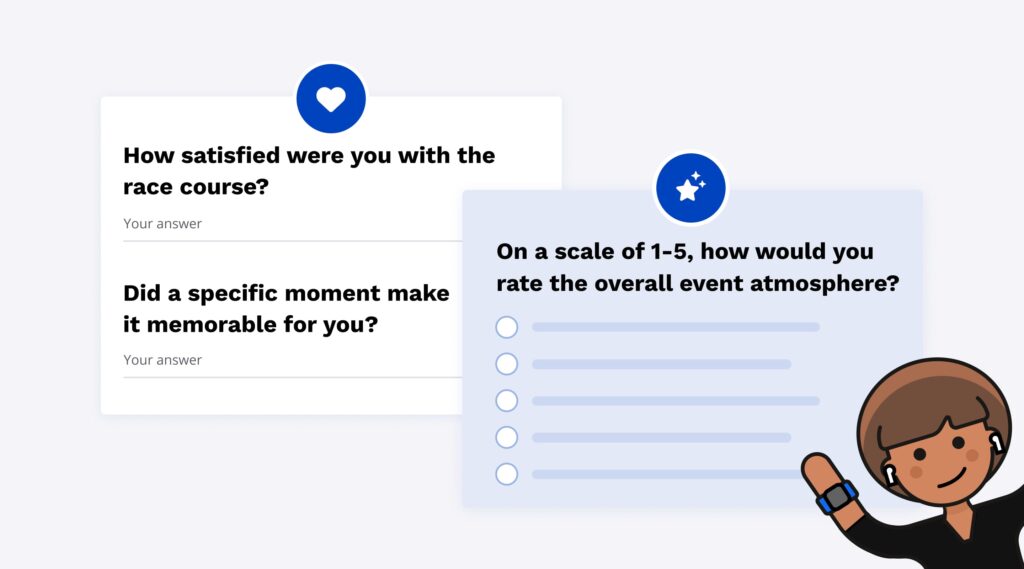
Our answer:
A post-race survey is a great tool to gather insights into your participants’ experiences that will shape the future of your event. A well-crafted, well-timed survey can shed light on satisfaction, and help you understand what’s working and which areas require improvement. This feedback can include things like the course design, event organization, and can even help you gauge the effectiveness of your marketing and participant engagement.
By analyzing the information gathered from these surveys, you can make informed decisions, implement necessary changes, and ultimately deliver exceptional event experiences for your participants.
To run your best post-race survey, here are some basics that will help you design a set of questions to maximize responses and validity:
- Keep it short: Let’s respect our participant’s time by not taking up too much of it. Keeping a survey short will result in a higher completion rate as well as more thoughtful responses.
We recommend the survey run no longer than 5–8 minutes. This typically works out to a maximum of 20 questions. - Avoid leading questions: Simply put, try not to put your own spin into the question prompt. Doing so might push a respondent into answering in a way that doesn’t exactly reflect their feelings.
For example, instead of asking: “Were our friendly volunteers helpful?” Ask: “How helpful or unhelpful were our volunteers?” In this example, by avoiding overly positive language/tone (helpful, friendly), you are likely to get a more accurate response. - Don’t make your questions too complex: Often referred to as a “double-barreled question” this is when a question asks for feedback on two separate things within a single question.
For example, asking: “How would you rate the support and quality of our race course?” is a difficult question to answer. Perhaps on-course support was great, but certain sections of the course were poorly paved. These related-but-similar questions can cause confusion and may produce less accurate results. It’s best to keep your questions as simple and singular as possible.
Now that we’ve covered best practices, here are some tried and true questions we know will provide you with useful feedback:
Course Design and Event Logistics
- How satisfied were you with the race course?
- Did you find the race course to be easy to follow?
Registration and Pricing
- Please rate your packet pickup experience.
- Were you able to complete the registration without any issues or complications? If not, please explain.
- On a scale of 1 to 5, how would you rate the overall value for money you received from participating in this event?
Atmosphere, Experience & Loyalty
- How likely is it that you would recommend this event to a friend or colleague?
- On a scale of 1 to 5, how would you rate the overall event atmosphere (crowd, cheering, participant camaraderie)?
- Did a specific moment or experience during the event make it memorable for you?
Pro tip:
We’ve developed a fast, three-minute read that covers 15 of the best questions to ask for your next post-race survey.
Lastly, here are a few tips for how and when to launch your post-race survey:
- Creating your survey: There are many free online software platforms that let you design, collect and analyze data, such as SurveyMonkey and TypeForm. Our recommendation is Google Forms: it’s free, provides great flexibility on the type of questions you can ask, provides a robust set of data analysis features, and best of all, integrates directly into Race Roster’s Digital Engagement Kit that can live directly on your post-event page.
- Distributing your survey: Email is the fastest and easiest way to send your survey. Remember to send your survey a second time to all those who did not open your email the first time. This will help you maximize participation. (Bonus tip: Social media is also a great place to distribute your survey. During your post-event wrapup and thank-you post, take the opportunity to plug your post-event survey.)
- When to send your survey: We recommend sending out the event survey within 7–10 days afterward. Ask for feedback while the experience is still fresh and the event is still top of mind.
You asked: What are some fresh ideas to market our events to increase registration, outside of paid Facebook ads and email campaigns to past participants?

Our answer:
In such a competitive landscape with numerous events vying for attention, keeping your marketing efforts innovative and encompassing is paramount. The right execution will not only increase registration numbers but also create a buzz, build anticipation, and cultivate a sense of community around your events.
Here are ideas you can integrate into your marketing initiatives:
1. Play to the search engine
Many participants get ideas for their next event through search. Our data shows the most common terms used by runners are: “[distance] race in [city name]”, “[distance] race in [months of year]” or “[distance] race near me”. Search those terms in your area and take note of the first page results.
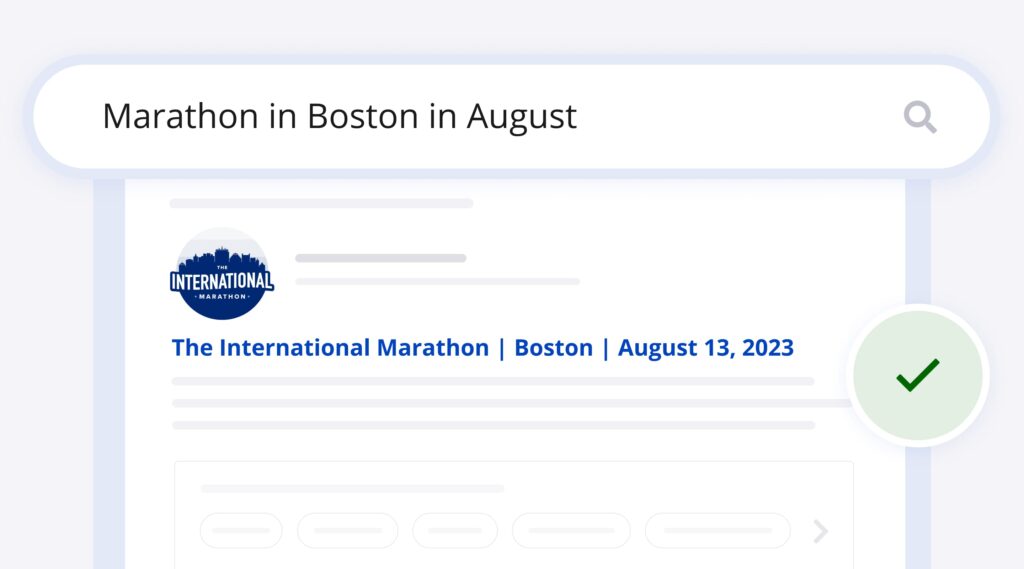
You’ll likely see:
- Event directories where local endurance events are listed. Make sure to actively participate in those listings.
- Individual event websites. These event organizers have invested in their website and SEO to target the keywords we listed above. SEO is often overlooked in marketing but can be one of the most powerful and cost-effective ways to make sure you are consistently getting visibility for your event.
2. Community Engagement
- Engage your local running store/gym and offer a “learn to run” or specific distance training plan.
- Collaborate with an online influencer to grow your audience. This can be as simple as reaching out to those in your local network who have a following. Trading registration or swag for a simple promotional post is an easy way to reach your local audience in an authentic way.
3. Do a giveaway or contest
Organizing online contests or challenges leading up to your event with offers of prizes and discounts can be a great way to create buzz and increase engagement. There are different ways to make this happen:
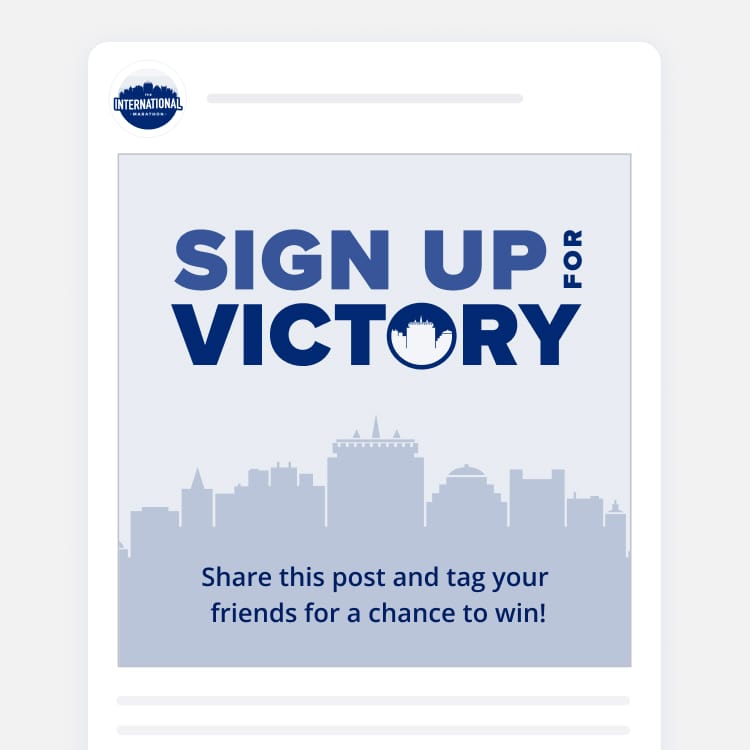
Leverage social media: encourage participants to share your post about the event and tag their friends, then choose the winner based on a random draw. This is simple to do and can happen throughout the year.
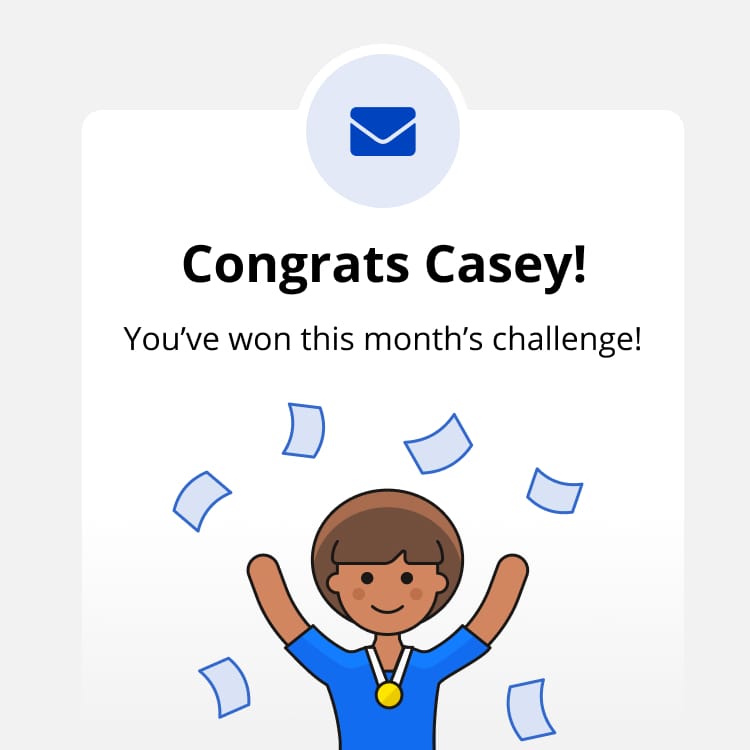
Start a competition. Popular running apps like Runkeeper give you the ability to start groups. Start one for your event, invite local participants (whether they are registered or not) and encourage fun competition and challenges. Pick monthly winners or participants at random to win registration or swag.
4. Local media coverage
Reach out to your local newspaper, radio stations, and TV channels to cover your event. Provide them with compelling stories, such as personal achievements, tie-ins to a fundraising organization or cause, or interesting event features. This can generate free publicity for your event and attract a wider audience.
You asked: What is the best way for us to justify raising our prices as a result of rising inflation?
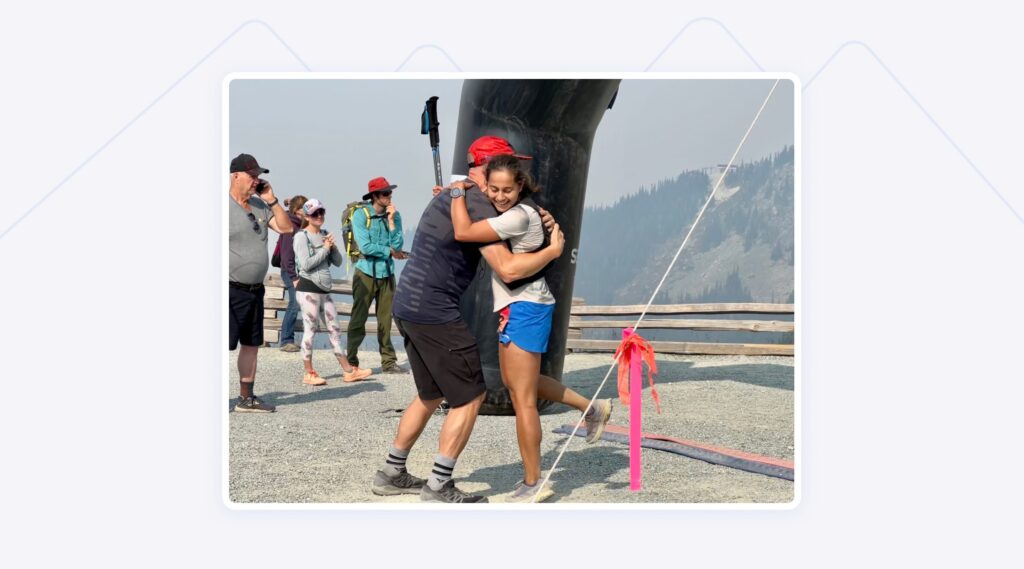
Our answer:
Rising prices are a challenge across every industry. Our suggestion is to draw the distinction between the price of an event versus the value it provides to participants. In our experience, an event is at its best when it’s organized as a holistic experience, not just a singular activity. When an event provides entertainment beyond one activity, the value of that experience will justify higher prices.
It’s important to remember that competition today doesn’t come only from other sporting events, but also from other entertainment in general. For the cost of registration, a participant might choose a weekend camping trip, a night out, or a concert. Broadening our horizon to not only focus on how we run our best event but how we can provide an unforgettable experience is what will keep participants coming back and help you build loyalty against price increases and competition.
What does an “unforgettable experience” mean? We’ve put together three points we hope will get your wheels turning!
1. Use your location/geography to your advantage
Get creative with where you are and what you have to work with. Perhaps your event can be organized around a particularly beautiful part of the city that provides a scenic run. Maybe your town has a famed mascot that can add a sense of whimsy and flare. Create a “hook” that can transform your event from a Point A to Point B journey to an experience that can be enjoyed throughout.
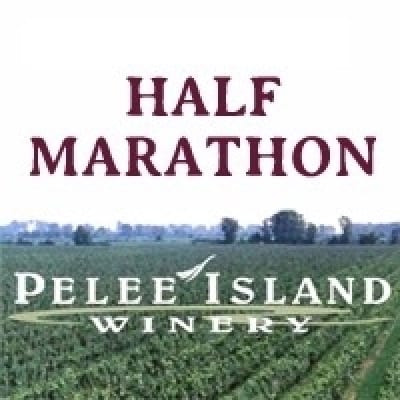
The Pelee Island Winery Half Marathon is a great example. Billed as “Canada’s most Southern Half-Marathon,” this incredibly scenic race is limited to just 400 participants and takes place on Lake Erie’s Pelee Island, ending at the island’s award-winning winery. Of course, not all of us have access to such prime real-estate but thinking outside the box can often lead to unique and interesting ideas!
2. Building an atmosphere goes a long way
An event is made up of a collection of experiences. From registration to the anticipation of the starting gun to the moment participants cross the finish line, opportunities exist to build an atmosphere and make each and every interaction special.
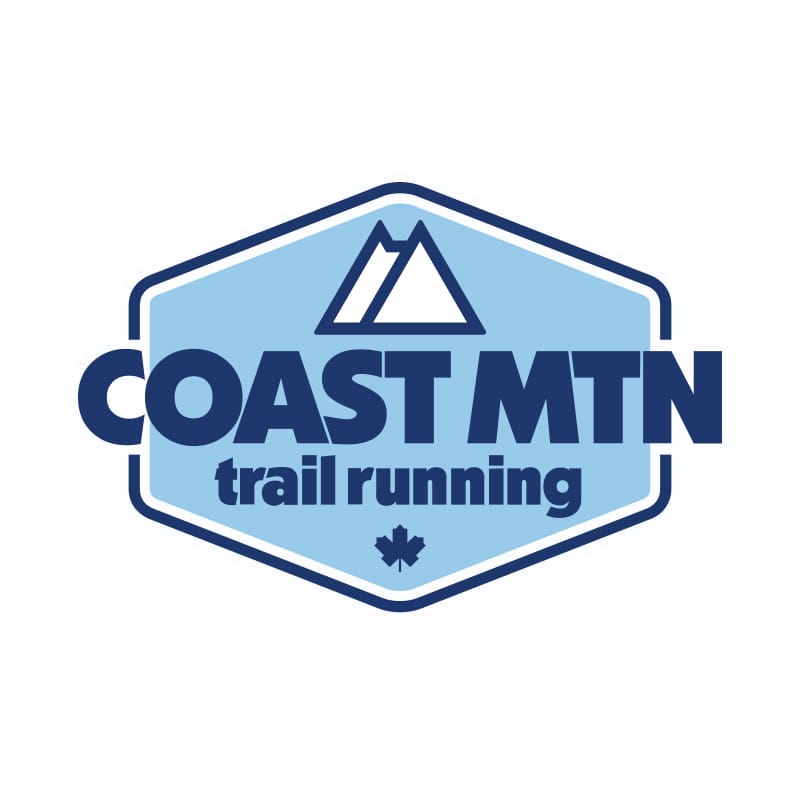
Building an atmosphere doesn’t always mean big dollars and flashy swag. Even small gestures can leave a lasting impression on a participant. Take the Coast Mountain Trail Running (CMTR) series for example: upon crossing the finish line, runners are offered a hug from race director Gary Robbins himself. It’s a unique touch that stays with participants for years to come—long after the pain of a 50K wears off.

Or take the Denver Colfax Marathon. The largest marathon weekend in the Rocky Mountains, the Denver Colfax Marathon course runs through downtown and by 7 miles of water, passing many of Denver’s iconic landmarks. The half marathon has a full mile through Denver Zoo. With mountain and city views, it is one of the most scenic marathon weekends in the country.
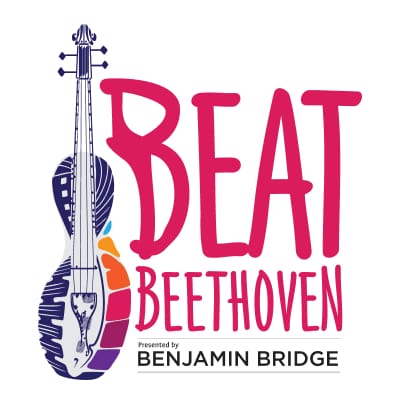
Halifax, Nova Scotia’s “Beat Beethoven” race takes building an atmosphere to a whole new level! During this 7.5KM race along the picturesque Halifax Waterfront, Symphony Nova Scotia plays Beethoven’s classics (amplified throughout the course) and participants are challenged to finish the distance before the orchestra is done playing—within 50 minutes. The event wraps with a live post-race concert from Symphony Nova Scotia with food and drink.
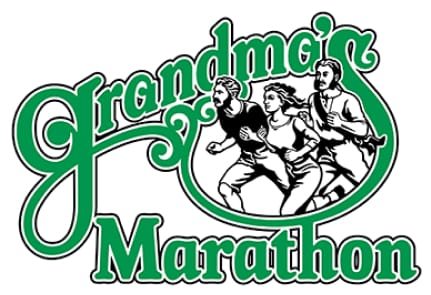
One of the largest marathons in the U.S., the Grandma’s Marathon takes place in Duluth, Minnesota, and calls itself “a world class event with small town charm.” The event wraps with a concert featuring local bands and offers free admission to participants and the general public. Talk about an experience!
These are just some examples of innovative ideas that event organizers are bringing to their events. From simple and heart-felt, to raising the roof fun, crafting an experience that’s interactive, exciting and memorable is the way to get participants coming back year after year.
3. Back to the basics
Details at an event can make or break an experience. Everything from easy parking to a smooth packet pickup and bag drop-off. Providing a worry-free event experience, before, during and after, is crucial for participants to feel confident about the quality, organization, and the experience they will have at the event.
The old adage “you get what you pay for” can be true and more than ever participants are willing to pay higher prices to ensure a smooth and fun experience.
When your event is well-organized and well-run, it’s noticed. Today, participants take to various platforms and detail their experiences. Everything from long-form write-ups often seen on messaging boards like Reddit to short, pointed reviews that detail likes and dislikes, getting the basics right plays a huge role in whether a new participant considers signing up for your event. A slightly more expensive event with positive reviews will go a long way in selling your event. Once again, the value of a smooth, well-organized experience goes beyond just the dollars and cents.

What’s new at Race Roster?
Visit our what’s new page for the most noteworthy Race Roster updates!